|
|
By Sandy, on June 14th, 2010
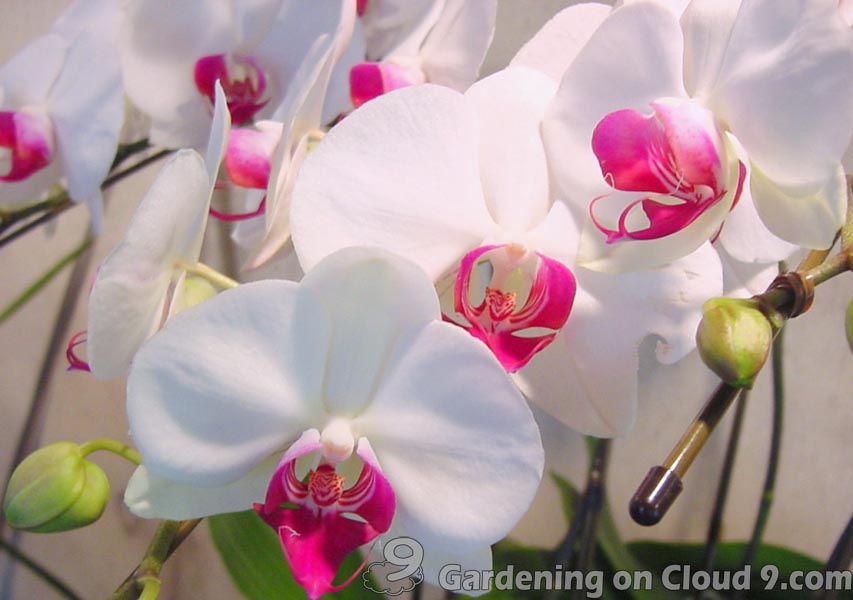
Phalaenopsis orchids are very suitable for city dwellers who have limited space and no gardens. Since Phalaenopsis orchid is quite easy to grow and generally likes the light and temperature condition of our homes, it is an excellent choice for the first time orchid growers, as well as indoor gardeners.
Below . . . → Read More: How to Grow and Care for Phalaenopsis Orchids
By Sandy, on May 20th, 2010
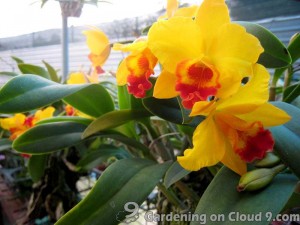 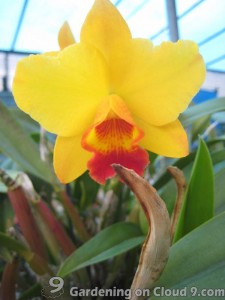
Cattleya orchids are among the most beautiful and satisfying of all orchid species to grow and care for. Since the care of Cattleya orchid is easy, gardening beginners who are interested in growing orchids but haven’t had any experience before, can start with Cattleya orchid. With simple growing conditions, most of us can obtain outstanding results.
And here, let me share with you what I have learned about Cattleya orchids.
Light
The growing area of Cattleya orchids needs to be covered with 50-60% shade cloth. If the light is too strong, the leaves of the Cattleya orchids will be burned. On the other hand, if the light is too weak, the plant will be very weak, and won’t blossom.
Continue reading How to Grow and Care for Cattleya Orchids
By Sandy, on May 3rd, 2010
Deciduous Dendrobium orchids are peculiar-looking plants. Before the orchid enters its dormancy, it will get dry and shrivel, showing its bamboo-like canes after all its leaves have dropped off. And amazingly, and lovelier by contrast, the orchid flowers bud and bloom from the nodes of these day canes once the orchid has come out from its dormancy.
And after sharing what I know about Cattleya orchids, let me share what I know about Dendrobium orchids here.
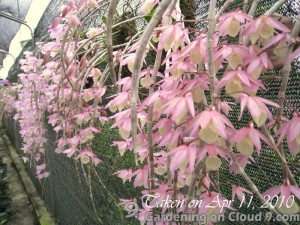 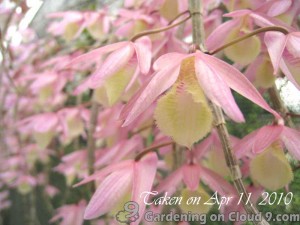
Continue reading How to Grow and Care for Dendrobium Orchids
By Sandy, on March 30th, 2010
Since I have learned how to do cutting propagation, I rarely buy plants in garden shops or nurseries. Cutting propagation is a cheap and easy way to obtain new plants. I have shown how to do cutting propagation in an earlier post – Plant Propagation from Cuttings – Coleus, and here, I would like to talk more about the rooting media of cutting propagation.
The Ingredients of Rooting Media
It is important to use a good sterile rooting media to get your plants off to a healthy start. While soil and compost are not good choices as the rooting media for cutting propagation since they may contain diseases, potting mix that is available in local gardening nurseries may also not be suitable for cuttings. Since it is not difficult to make rooting media for cuttings, we can just make our own as well.
A good rooting media contains equal parts of coarse, sharp sand and peat moss. Instead of sand, we can use perlite, and instead of peat moss, we can use vermiculite. However, I often will pot my cuttings with just coarse sand alone. By this method, the cuttings grow just fine. Continue reading Potting Media for Cutting Propagation
By Sandy, on December 3rd, 2009
Zinnia Elegans is a gorgeous choice for gardens. Zinnia comes in a wide variety of colors, and its large, bright blooms really give a garden a sense of cheer. There are even varieties of zinnia that are as jumbo as three feet in height! Moreover, Zinnia Elegans can easily be grown from seeds. All these factors make Zinnia a very popular flower in gardens.
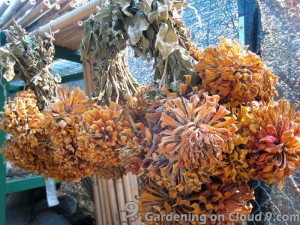
Collecting seeds of Zinnia Elegans is fairly easy. As the blooms fade, air dry the flowers by hanging them upside down.
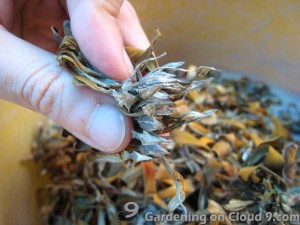 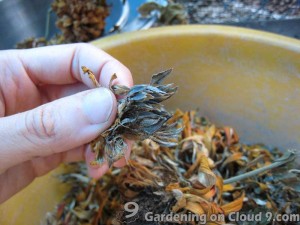
(Left: Zinnia seeds that are not yet ripened Right: ripe Zinnia seeds)
Continue reading Zinnia Elegans: Collecting and Saving Seeds
By Sandy, on October 29th, 2009
There is one thing we should keep in mind when fertilizing our plants – the more isn’t the better. Even though I knew this rule-of-thumb very well (I thought I did…) and practiced what I preached (for most of the time), recently, I’d over-fertilized my African violet – Frosted Denim – and burnt most of its flower buds 🙁
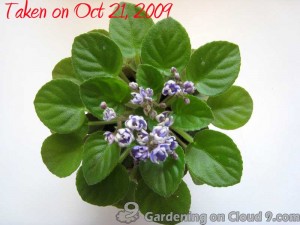 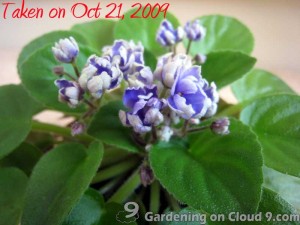
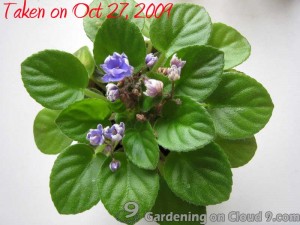 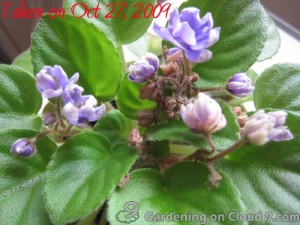
Real Life Example of Bad Fertilizing Practice
A few weeks ago, my African violet – Frosted Denim – was growing beautifully with many flower buds. Since African violets like to be continually fertilized during their blooming period, I diligently fed mine in a regular basis with diluted fertilizer. Continue reading Plant Fertilizer – When More Isn’t Better
By Sandy, on September 3rd, 2009
In the gardening class which I took last weekend, I have learned how to transplant a tree. While I have never thought that transplanting a tree is an easy task, I wouldn’t expect that it could be quite difficult either (especially on a hot summer day). And here, I would like to share some key points of tree transplanting.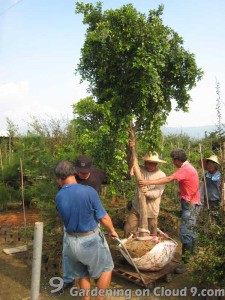
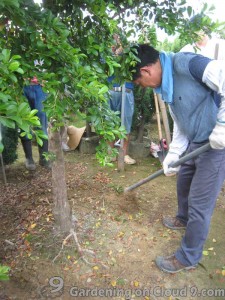
Root pruning can greatly increase the chances of successful transplanting, especially for big trees. We should prune the roots 3 months – 2 years in advance. By severing the roots at or just beyond the drip line of the tree to be moved, the long unbranched roots will be broken. This will prompt growth of new roots near the main trunk, compact the existing root system, and increase the tree’s chances of survival once it is moved. Continue reading Transplanting a Tree
By Sandy, on July 15th, 2009
I bought a pot of Episcia (aka Flame Violet) seedling in October last year. Since then, it has been growing beautifully in my room, with its first flower blooming in April.
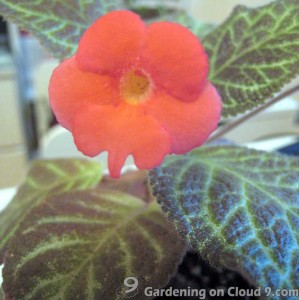
Thru some research, I have learned that Flame Violet can be propagated by stolon cuttings. This is my first time growing Flame Violet. Everything to me is new and interesting. And surely, I would like to try stolon propagation. While I was wondering when I should cut the stolons of my Flame Violet for my experiment, my dear brother accidently cut off two stolons from the plant with the rotor blades of his newly bought remote control helicopter. Ok. That’s great! At least I was saved from thinking too much more before taking any action. Continue reading Propagate Flame Violet by Cutting
By Sandy, on July 10th, 2009
I bought my first pot of African violet a few months ago. While the newly acquired African violet is blossoming beautifully, I didn’t aware but only until another gardener pointed out to me that my African violet actually had multiple crowns.
As a curious gardening novice who like to try different things, I decided to take up this challenge and separate the crowns. It has been almost three months since I separated the crowns. Seeing that the separated crowns of my African violets are now growing healthily, I consider this “operation” as a successful one. And here, let me share with you how I did it.
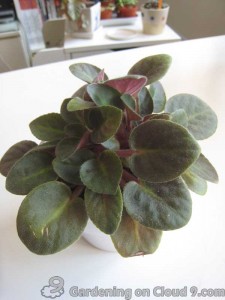
Continue reading African Violet Care – How to Separate Crowns
By Sandy, on May 19th, 2009
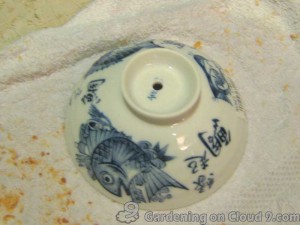 We know that good drainage is the key to healthy plants, but the containers that we find most attractive are often the ones without drainage holes. But we can drill the drainage holes by ourselves, and it is much easier than what most of us would expect. All we need is an electric drill and steady hands. We know that good drainage is the key to healthy plants, but the containers that we find most attractive are often the ones without drainage holes. But we can drill the drainage holes by ourselves, and it is much easier than what most of us would expect. All we need is an electric drill and steady hands.
And here, let me show you how to drill holes on our containers.
Continue reading Drilling Drainage Holes by Ourselves
|
|




















Recent Comments